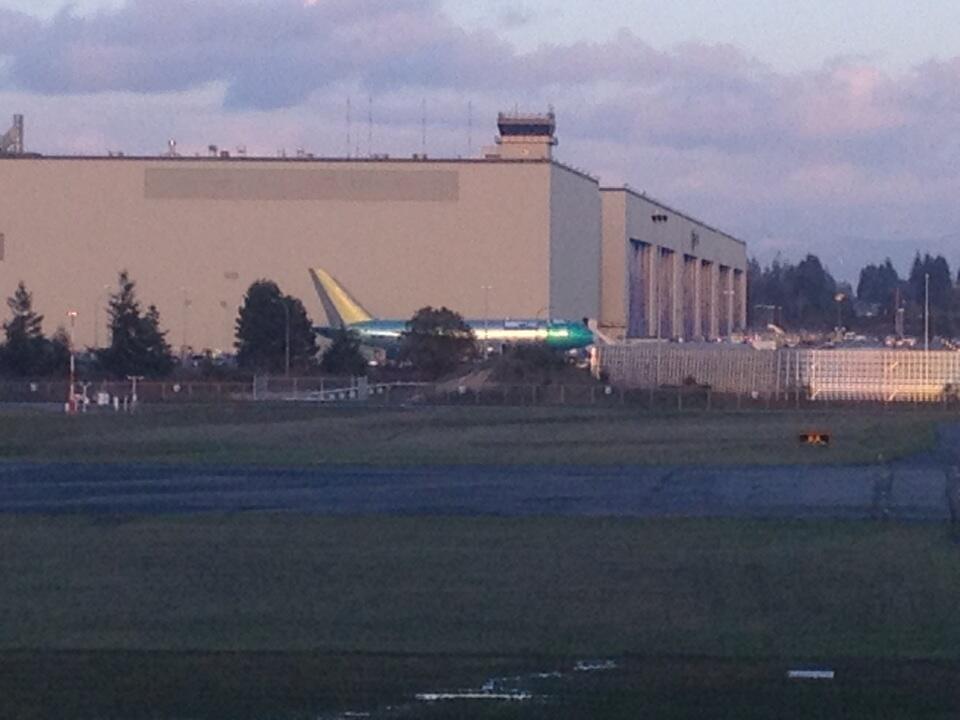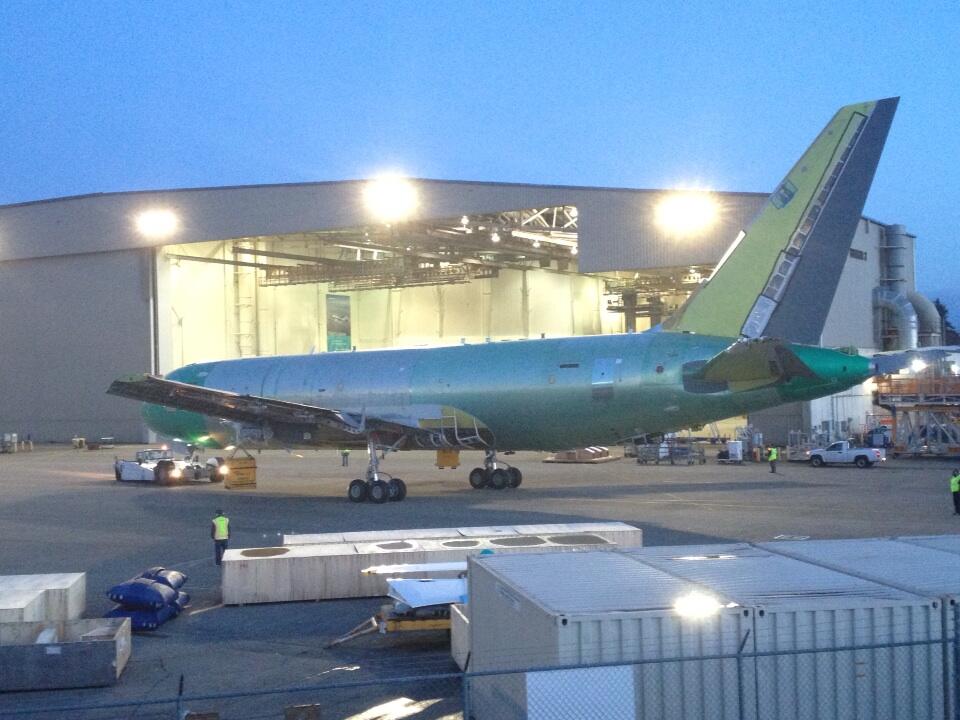A travers les aléas des restrictions budgetaires ...
Vu sur Leeham,
Qui renvoie sur defense news ...
http://www.defensenews.com/article/20130402/DEFREG02/304020017?utm_source=twitterfeed&utm_medium=twitter
 Re: KC-46
Re: KC-46 Re: KC-46
Re: KC-46
Air Force, Boeing Working To Reduce KC-46A Tanker's Weight
The
Air Force and Boeing are relying on an "active" program to reduce the
KC-46A tanker's weight, which is posing a technical challenge that --
if not remedied -- could erode the aircraft's ability to meet mandatory
operating requirements for takeoff, mission radius and landing,
according to government and industry officials.
 Re: KC-46
Re: KC-46 Re: KC-46
Re: KC-46 Re: KC-46
Re: KC-46 Re: KC-46
Re: KC-46 Re: KC-46
Re: KC-46 Re: KC-46
Re: KC-46First flight of the 767-2C, meanwhile, remains on track for June 2014, Boeing says, while first flight of the fully configured KC-46A is still set for January 2015. Based on the 767-200ER baseline design, the -2C includes a strengthened main-deck cargo floor, cargo door and freighter features, 787-based cockpit display system, auxiliary body tanks for increased fuel carriage and provisioning for the plumbing and wiring required for the refueling mission systems.
Boeing will use the four test aircraft as part of a combined effort to earn two separate certifications from the FAA, the first of which will be an amended type certificate for a 767-2C “provisioned freighter” without the aerial refueling system and associated military avionics and self-defense systems planned for the tanker. Boeing will then apply for a supplemental type certificate (STC) for a fully equipped KC-46A.
 Re: KC-46
Re: KC-46 Re: KC-46
Re: KC-46There is a "high risk" that the Boeing KC-46A tanker will not be ready in time for its initial operational test and evaluation (IOT&E) in 2016, a report to Congress disclosed on 29 January.
According to the annual report by the US Director of Operational Test & Evaluation (DOT&E), IOT&E for the KC-46A is expected to be delayed by six months to a year.
Boeing is currently putting the finishing touches to the first of four test platforms that have been contracted under the USD3.9 billion engineering, manufacture, and development phase of the US Air Force's (USAF's) KC-X programme, with the remaining three now in varying stages of production at the company's 767 airliner line at Everett, near Seattle in Washington.
As they stand, the programme timelines will see the four test aircraft begin rolling off the production line in their 'green' 767-2C provisioned freighter configuration (but with a 767-400 flight deck and 787 large format displays) in the coming weeks, before being flown the short distance to King County International Airport (colloquially known as Boeing Field) for the fitting of the aerial refuelling components. The first flight of a fully provisioned KC-46A tanker is scheduled to take place in the third quarter of 2015.
Milestone C - authorisation for low-rate initial production - for 14 more aircraft is expected to be awarded on the back of this first flight, with IOT&E scheduled to begin in May 2016. Assuming this proceeds as planned, a decision on full-rate production for a further 161 aircraft is to be made in June 2017, to be followed in August of that year by delivery of the first of 18 combat ready KC-46As (including the four refurbished test aircraft) to the USAF.
In response to the concerns raised in the DOT&E report with regard to slippages in the IOT&E timetable, Boeing told IHS Jane's : "We remain confident in our plan to support IOT&E for the KC-46A tanker and we continue to meet our contractual requirements. Our current assessment confirms that we have a valid flight test plan in place and that we remain on plan to deliver the first 18 combat-ready tankers to the USAF by 2017."
 Re: KC-46
Re: KC-46 Re: KC-46
Re: KC-46 Re: KC-46
Re: KC-46 Re: KC-46
Re: KC-46 Re: KC-46
Re: KC-46 Re: KC-46
Re: KC-46 Re: KC-46
Re: KC-46
First 767 tanker out of the Everett factory pic.twitter.com/54V4EzAXsg
— Paine Airport (@mattcawby) 18 Mars 2014
First Boeing 767 tanker moved inside the Everett Modification Center tonight pic.twitter.com/zbQBwjpUtZ
— Paine Airport (@mattcawby) 18 Mars 2014 Re: KC-46
Re: KC-46 Re: KC-46
Re: KC-46
Second 767 tanker out of the Everett factory pic.twitter.com/CU8kgA6krn
— Paine Airport (@mattcawby) 18 Mars 2014 Re: KC-46
Re: KC-46 Re: KC-46
Re: KC-46 Re: KC-46
Re: KC-46 Re: KC-46
Re: KC-46 Re: KC-46
Re: KC-46
 Re: KC-46
Re: KC-46 Re: KC-46
Re: KC-46 Re: KC-46
Re: KC-46Aircraft configuration development, many of you are familiar with this, and this is one of the things that the FAA has been very helpful in helping us work through, but we’re essentially taking a 767-200 extended range passenger aircraft and converting it into a tanker, and the way that we’re doing that is taking the type certification for that 767-200-ER and we added dash-300F wings and we added dash-300F landing gear. We added a dash-400 auxiliary power unit. Then as the aircraft proceeds down the line in the plant there at Everett we’re turning out a provision freighter which we refer to as the 767-2C. That’s our baseline aircraft that will come out of the end of the factory. It will have the enhanced flight deck, it will have the cargo floor and door, it will have the body fuel tanks for the air refueling mission, lots of provisions for the tanker system,
 Re: KC-46
Re: KC-46
